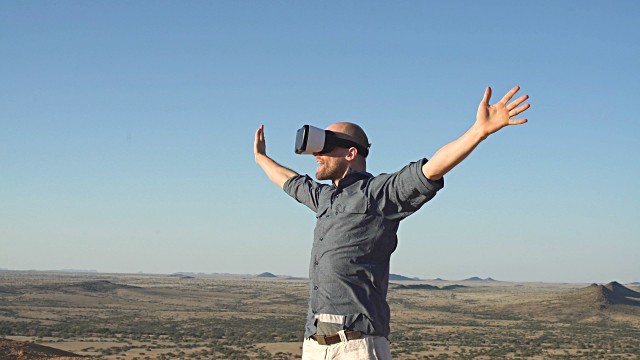A business trip is a special kind of official communication. This is one of the ways to attract new customers for your product, as well as find sponsorship for the project. Therefore, this is a very important business process.
Imagine a world where you can go on a business trip without leaving the office. A world in which there’s no longer any need to arrive at the airport three hours before departure, then pick up a car from Enterprise in St Thomas or somewhere else, even though it’s the most convenient transport for traveling.
Experts in the field of technological innovation claim that such a world will soon become real. Some companies are already developing virtual travel technology. In a few years, virtual reality will reach such heights that the concept of business trip may be on the verge of existence. This is how it will happen…
Traveling in virtual reality will become possible
Virtual reality is no longer a toy for gamers. Already today, large companies that are in no way associated with the gaming industry are beginning to actively work with this technology.
For example, Ascape and Tourism Australia are already developing products that will enter the market under the names of “Become a virtual reality traveler” and “Australia…it’s a place you feel.” These virtual tours allow users to travel to real places without leaving home.
Travel agencies are joining forces with virtual reality companies to test how such tours will affect the sale of real-life packages, and this tactic seems to work. For example, users who take a little walk around virtual Manhattan are 190% more likely to book tours to New York.

Virtual meeting rooms already exist
Travel and official meetings require a considerable part of the budget from small and medium-sized businesses, as well as a lot of time. If all business trips could be made virtual, this would save the business a lot of money.
Virtual conference rooms that could bring this idea to life already exist. For example, AltspaceVR is developing a project called Social VR – “social virtual reality.” Thanks to it, users will be able to share virtual space with friends or colleagues. Due to the large number of sensors, the user’s avatar will copy all the movements and facial expressions of the owner, creating a complete illusion of real communication.
In fact, already today the available technologies allow us to completely abandon real business meetings in favor of virtual ones. And if this is possible, it remains only a matter of time before it becomes an ordinary practice.
What to strive for?
Before all of the above becomes as familiar and natural as a Skype call, some changes in the current state of things must occur.
First, virtual reality is still not widespread. Although projects such as the Oculus Rift or Google Cardboard are very interesting, it’s still highly unlikely that many people will prefer them over real meetings. Virtual reality must become more massive.
Secondly, virtual reality in its current form is far from perfect. Helmets should become smarter, more compact and get additional sensors. For example, gaze tracking systems.
Something ends, something begins
Another obstacle that inevitably gets in the way of virtual meetings is tradition. Alas, the business still relies heavily on handshakes. Company executives from the 500 richest companies in the world prefer to discuss important issues face-to-face, not even relying on phone calls.
Probably, the technology of virtual meetings will begin to be popularized. First of all, it will interest those who are forced to work with an extremely limited budget. That is – small and medium business. Probably, as small and medium-sized businesses grow, the new tradition of virtual meetings will be popularized among leaders.

Something stays unchanged
Even in the future, some entrepreneurs will still prefer personal meetings to any high-tech alternates. In the end, a face-to-face meeting provides a level of trust that technology is not yet capable of providing.
The boss, who goes on a business trip himself, whether sends his person on a trip, thereby demonstrates the seriousness of his intentions and his willingness to take on obligations. Therefore, despite the development of technology, something will remain unchanged.
Summing it up, virtual reality is a very productive niche in modern technology. It provides additional opportunities in many areas of human life, including travel. Today, you can wear a virtual reality helmet and set off to the snow-covered Everest, in the Grand Canyon, or anywhere else in the world.
Therefore, virtual reality is also applicable for business meetings. Despite some restrictions, it makes it possible to hold a corporate meeting or important negotiations without leaving office, which in turn will be very beneficial from a financial point of view for each participant. This is especially true for business events of an international level.


